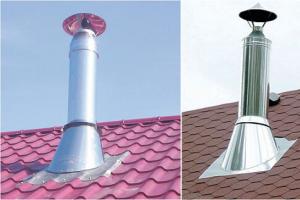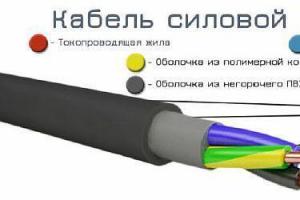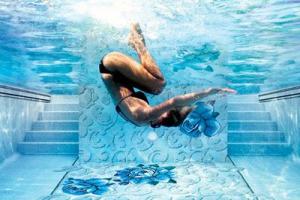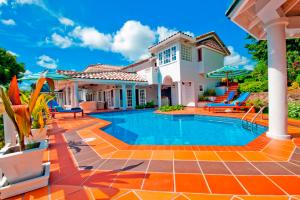A swimming pool is a complex hydraulic structure, so special requirements are placed on its facing materials. They must have a number of technical characteristics that meet the specific conditions of their operation: first of all, zero or close to zero coefficient of water absorption, impact resistance, frost resistance, as well as resistance to ultraviolet radiation and the action of chemical reagents. That is why ordinary tiles used for tiling, for example, a kitchen or bath, are absolutely not suitable for a swimming pool.
Basic technical requirements
One of the most important criteria when choosing tiles for laying in a pool is its minimum water absorption (this indicator directly depends on the porosity of the tile; the larger it is, the higher the water absorption). It is this parameter that guarantees the durability of the facing material, and therefore the service life of the entire structure. After all, even the slightest seepage of water into the porous base of the tile can make it brittle and brittle and lead to the gradual destruction of not only the finishing coating, but also to the violation of waterproofing and protection of the structural elements of the pool. That's why; If the lining of the pool bowl was carried out without taking this requirement into account and the finishing ceramics turned out to be insufficiently waterproof, the material will have to be completely changed - there is no other way out. According to the unified European standard UNI EN 99, the water absorption coefficient of tiles designed specifically for a swimming pool should not exceed 5%.
Water absorption also significantly affects the ultimate strength of the tile, or its ability to resist bending loads. And only a material with a dense structure and low porosity will give excellent results, withstanding multi-ton water pressure on the walls and floor of the pool bowl. In addition, the absence of holes and voids in the body of the tile eliminates the possibility of the appearance and reproduction of various bacteria and microorganisms in them, which actively destroy the lining from the inside and secrete a mucous coating, which makes it slippery and dangerous and is an additional factor in water pollution.
The finishing of the aquazone must be resistant to aggressive environments. The water in the pool either contains chlorine or has a low pH level, and the lining must be periodically washed with special cleaning agents. Therefore, in order to minimize and simplify the maintenance of the pool, for lining the bowl it is necessary to choose a material with a perfectly flat, smooth surface. Such characteristics will perfectly save money and time.
Anti-slip surface
Special attention should be paid to the tiles intended for laying the floor of the aqua zone. The fact is that water can accumulate on the floor in such places, so there is a risk of slipping and injury. This is why floor tiles for swimming pools and the rooms in which they are located are subject to the European Union Building Materials Directive 93/68/EWG, which sets standards for anti-slip flooring. To give the tile an anti-slip (anti-slip) effect, various notches or a relief pattern or a special composition are applied to its surface, making it rough. According to the DIN 51097 standard, there are three classes of such coatings used in areas such as baths, swimming pools, showers, that is, where people walk barefoot. Each class corresponds to a specific installation area. Class “A” includes materials suitable for covering floors in locker rooms and other fairly dry rooms. Class “B” tiles are intended for showers, pool walkways, inclined edges and approaches to them. For finishing the steps of the stairs, as well as inclined slopes that go under water, class “C” materials are used, which have the highest anti-slip rating.
 Sizes and shapes
Sizes and shapes
There are certain restrictions regarding the shape and size of finishing elements. You cannot tile the pool bowl with any tile you like, and a large one at that. This is explained by the fact that its walls and bottom are subject to enormous mechanical water pressure, which even a powerful structure may not withstand. Therefore, in order for the tile to maintain its integrity in such extreme conditions and not peel off from the base, its dimensions should not be larger than those provided for by the Olympic standard - 12.5x24.5 cm. Rectangular pools can be tiled with large tiles (12.5x25.15x15 cm) , but not exceeding the specified standard, and for pools of complex configurations, smaller ceramic products are used (2x2; 2.5x5; 5x5; 10 x 10 cm).
The seams between the tiles are the most important compensation component in the pool, so they are made a little wider than usual. Determine the thickness of the seam based on the size of the tile (mosaic). Ceramic tile sets may include special shaped products and accessories designed for finishing corners, edges and sides of the pool, overflow gutters, etc. The presence of such ready-made parts greatly simplifies the cladding process, allowing you to equip the pool with the necessary safety elements without wasting time and effort, while at the same time giving it a complete stylish look.
Glass
Taking into account the coefficient of water absorption, the ideal material for lining the pool bowl is glass mosaic - an alloy of silicon sand with other components and additives of coloring oxides. Glass has zero water absorption and high water resistance. The glass mosaic coating is durable, heat- and frost-resistant, practically does not collapse and does not fade under the influence of chemical reagents. Moreover, it has a solid structure, which means it is not susceptible to the influence of microorganisms and bacteria and can be used for finishing swimming pools. To increase mechanical strength, the mosaic is tempered in a special way: for example, it is subjected to additional firing at that stage of the technological process when molten glass is poured into molds. As for the color palette, it is difficult to describe, it is so rich. To achieve multi-colored glass, a wide variety of substances are added: from boron, cadmium and selenium to the semi-precious mineral aventurine and mother-of-pearl. The colors of the mosaic finish retain their brightness even under water, and thanks to its movement, the effect of the painting comes to life.
The most common form of typesetting elements (they are also called modules, chips, tesserae) is square. The smaller they are, the more detailed the image will be and the more accurate the drawing (panels, ornaments). Mosaic pieces in accordance with the selected sample are collected into matrices. The final mosaic panel, the area of which can be several square meters, is made up of these fragments already in place and installed in the same way as an ordinary tiled covering. The flexible base of the mosaic allows it to be used on any surface, including curved ones.
 Ceramics
Ceramics
Among ceramic facing materials, only porcelain tiles and some types of clinker have the required water absorption rate. They are manufactured using technologies specifically designed to maximize density and reduce porosity of the material. Porcelain ceramic tiles are made by pressing a mixture of white clay, kaolin, feldspars and quartz - the clay dough recipe is similar to the composition of porcelain, hence the name. To obtain different shades, coloring substances, usually oxides of various metals, are added to the mixture. After pressing (by pressing or extrusion), the products are fired at a temperature of 1250-1300 °C. As a result, the components are not only sintered, but also largely melted. Thanks to this structure, porcelain ceramic tiles receive high mechanical strength and a very dense, glassy surface, so they are usually not glazed.
Clinker tiles first appeared in Holland and were originally used for paving roads - durable and strong. Today, thanks to its unique properties, the scope of application of tiles has expanded significantly. Clinker is a natural material that is made from special plastic grades of clay. Clinker tiles can also be pressed and extruded. The pressed plates are fired at high temperatures (1300-1400 °C). During the manufacturing process, glassy chamotte is added to the mass - a substance that turns the material into one of the most durable ceramic products. Due to its large thickness and density, it can withstand strong pressure, as well as significant temperature changes. To finish swimming pool bowls, glazed clinker with a water absorption of no more than 3% is used.
Porcelain tiles and ceramic tiles for poolsdiffer in production technology and composition. During the production process, the material is pressed and fired at high temperatures, but ceramics include a mixture of clay and sand, and granite includes a large amount of marble and granite chips.
Accordingly, the second one is much stronger and more durable. The use of ceramics and granite in pool design has become quite popular.For a permanent pool, it is important to choose high-quality ceramic tiles. How not to make a mistake? We do not consider porcelain tiles for pools in this article, since they have a completely different price category.
ADVICE!It is best to tiling the pool bowl with tiles with a rough surface, as they do not slip.
Firstly, all tiles are divided into classes:
A-use of tiles in public places that do not come into contact with water (locker rooms, corridors).
B-use of tiles in wet areas.
C-use of tiles in areas in contact with water.
The latter class is used for finishing the pool and the area around it; it has a rough surface, which eliminates the risk of injury.
Let's make the right choice

Let's look at the pros and cons of ceramic tiles and Porcelain tiles for outdoor pool.
Advantages of ceramic tiles.
- It has a relatively low price compared to porcelain stoneware and mosaic tiles.
- Wide choice of color palette. From pastel colors to bright ones with ornaments. You can create a unique pattern by decorating the bowl and the area around it.
- The beautiful aesthetic appearance of ceramic tiles makes it possible to implement the most daring design solutions.
- Thanks to a special coating, it has an anti-slip surface, so it is suitable for both interior decoration in the pool and as finishing of the sides.
- Another advantage is that the tiles do not heat up from sunlight and have a comfortable temperature. It is pleasant to walk on it barefoot and sunbathe.
- Since the tiles are smooth, they are easy to maintain. And plaque and mold do not settle on its surface.
The cost of ceramic tiles varies from 2,705 to 10,284 rubles. per square meter
Disadvantages of ceramic tiles

- It is afraid of low temperatures, and in winter it can become covered with netting. Therefore it is suitable for finishing indoor swimming pools.
- The tile is quite durable in its composition, but has a porous structure, so it absorbs moisture up to 3%. If you choose glazed models, then the tiles are quite suitable for the interior decoration of the bowl.
- Unfortunately, the richness of the color of ceramic tiles fades in the sun. But usually ceramic, so this minus does not play a special role. Unless, of course, in your latitude it’s summer all year round.
Advantages of porcelain tiles

- One of the main advantages is the rough surface of the tiles, which, even when exposed to water, has excellent anti-slip properties. Non-traumatic tiles, the most reliable and most suitable for use in finishing the pool bowl, steps without additional rubber lining and the area around it.
- It has excellent impact-resistant and vandal-proof properties.
- It is not covered with mesh and withstands water pressure well. Durable tiles that will last 15-20 years.
- Thanks to the special composition of sand and marble chips,... Tolerates severe frosts and hot summers remarkably well.
- The appearance of the tiles does not deteriorate over time and does not fade.
- Absolutely does not absorb water, so it is ideal for interior decoration of the pool.
- Not influenced. Therefore, it can be easily washed with alkaline compounds and a hard washcloth. These tiles can be used to decorate both fresh and sea pools and Jacuzzis.
- Just like ceramics, there is a wide choice of colors. But in this case, porcelain stoneware can be matte and glazed, which makes the tile even more durable and waterproof.
The cost of porcelain tiles varies from 2,094 to 10,845 rubles. per square meter
Disadvantages of porcelain tiles
- Due to its durable composition, it is difficult to restore. But in principle, you will not come to this process soon.
- The price is quite high, which justifies its high quality.
- Gets very hot from sunlight.
Important features when choosing tiles.
Tiles are primarily about protecting your pool from the destructive power of water. In addition, this is an excellent design solution for your interior. When choosing high-quality porcelain tiles for a swimming pool, you need to pay attention to the class that is suitable specifically for use in rooms with water. As for the manufacturer, foreign ones are considered the best. And in terms of the appearance of the tile, it should be small in size, maximum 15x15 centimeters, with rounded edges.
Porcelain tiles for swimming pools should have a natural rough surface, resembling sand or crumbs, or matte. And ceramics must be covered with glaze. The packaging should be marked with the percentage of moisture absorption. This percentage should be practically reduced to zero. Otherwise, the concrete base will collapse over time when exposed to moisture. There should be no mesh or chips on the tile; these should be discarded. The manufacturer indicates the bending strength. The higher this indicator, the better, since the tile is subjected to pressure from a large mass of water. It is also important to pay attention to the number of frost resistance cycles. Porcelain tiles have the highest rating.
Building a swimming pool is a complex engineering and construction task. To do this, you need to build or dig a bowl, properly reinforce it and fill it with concrete, waterproof it and install utilities. But it is no less important to finish the pond with reliable material - first of all, tiles. Regular pool tiles are not suitable. Why and what material to choose? Let's figure it out.
High-quality pool finishing

The most beautiful lining of the pool bowl is made from ceramic tiles.
Ordinary tiles used for wall decoration are not suitable for a swimming pool. It is too porous and loose, and its glaze is fragile.
The surface of the coating in the bowl is exposed to harmful microorganisms and disinfectants. The water also presses on the tiles with great force. Because of all this, ordinary tiles will quickly crack.
Important characteristics of the facing coating

Tile properties, suitable for finishing swimming pools:
- Weather resistance, impact resistance and maximum frost resistance. These parameters are especially important when the pool is built outdoors. Here you should take into account strong temperature changes and winter cold.
- Practicality and reliability - no less important characteristics of the coating.
- Durability- its guaranteed service life should be maximum.
- Anti-slip qualities. Walking on wet surfaces can cause you to slip and fall. This is fraught with injury. Therefore, pool tiles must be equipped with an anti-slip face covering. Its surface can be rough, embossed, or coated with a protective agent.

- Water absorption coefficient. The coating should absorb moisture as little as possible. That is, we choose a coating with a minimum water absorption coefficient.
- Aesthetic appearance of the coating. Many manufacturers fully comply with it. Now you can buy tiles in a wide variety of tones and shades, with a variety of patterns, patterns and textures.
Choosing tiles for a pond
So, how to choose the right tiles for finishing a pool, what qualities of the material are most important?
- First of all, find out what the water absorption rate of the tile you like is. This parameter should tend to zero. If the material is excessively porous, it will quickly become saturated with moisture. As a result, the service life of the coating will be shortened and it will become brittle and brittle.

The longer porous tiles are exposed to a damp environment, the more serious the problems will be. Not only for her, but also for the pool itself. The tightness of the waterproofing will gradually be compromised. This will provoke the destruction of the structure.
Construction standards strictly regulate the water absorption parameters of tiles. For pool facing material it should be no more than 3%.

- All tiles used in wet rooms (swimming pools, baths, bathtubs, showers), in which users walk barefoot on wet floors, are divided into three classes based on their anti-slip properties.
Such tiles are marked in Latin letters. The classification begins with the minimum slope angle at which bare feet will not slip. Each batch of anti-slip finishes is tested according to this indicator.

- Class A. This is the tile that bare feet can only stand on at a 12-degree incline. It is used for laying minimally moistened walkways, floor coverings in recreation areas and locker rooms. It can also be used to finish the bottom of a pool bowl at a depth of more than 80 cm.
- Class B. Such tiles are used at a slope angle of 12 degrees to 18. They can be used to cover the walkways of the pool, areas adjacent to its sides, and shower compartments.
Class B tiles are also suitable for lining shallow pools (less than 80 cm deep) for children (“paddling pools”) and beginner swimmers. It is also suitable for stairs at least one meter wide, with double-sided handrails.

- Class C. Tiles of this category can be used at a slope angle of 18 to 24 degrees. It is used in areas near the pool, for its sides, steps and slopes, as well as for coverings with a strong slope.
Types of tiles suitable for swimming pools
Pool tiles can be made from various materials. The most common cladding is made of painted or glazed ceramics and glass. These materials have their own advantages and relative disadvantages.
Mosaic tiles

Mosaic is a facing material in the form of small chip tiles. Their shape can be very different: round, figured, polygonal, rectangular, square. But the latter form is the most common. For ease of installation, the chips are assembled into modules and glued to a plastic mesh.
Most common chip sizes:
- 1.5×1.5 cm;
- 2.3x2.3 cm;
- 2.4x2.4 cm;
- 2.58x2.58 cm;
- 4.8x4.8 cm.
The most common sizes of mosaic modules:
- 29.7x29.7 cm;
- 30×30 cm;
- 32x32 cm;
- 32.5x32.5 cm;
- 32.7x32.7 cm;
- 25x50 cm.
Such tiles are used for cladding (partial, full or in the form of panels) ceilings, walls, podiums in the pool, as well as its bowl and sides. The main difference between mosaic tiles and their regular counterpart lies in their base.

It's flexible. Therefore, it allows you to lay such a coating on round, semicircular, curved and shaped surfaces.

Mosaic tiles are made from a variety of dense materials:
- marble;
- onyx;
- smalts;
- metal;
- slate;
- composites;
- ceramics;
- glass, etc.

The most widespread are the last two materials. Glass mosaic is made from molten silicon sand and various oxide pigments.
Advantages of glass mosaic:
- Lowest level of water absorption(0-0.4%). It has high water resistance.
- These pool tiles will last a very long time.. Its guaranteed service life is 15-20 years.
- The material is frost and heat resistant.
- Glass is resistant to chemicals. Tiles made from it do not change their appearance due to their impact.
- The structure of the material is solid. It has no pores in which harmful microorganisms could develop.
- High impact strength. To give mosaic glass increased mechanical resistance, it is tempered - fired at a very high temperature.

- Variety of colors and tones. To achieve a wide color palette, manufacturers add various pigmenting substances to the glass melt. This can be mother of pearl, boron, selenium, cadmium, various minerals, etc.

The best mosaic manufacturing companies for pool lining:
- Latina Ceramica (Spain);
- Kerama Marazzi (Russia);
- Natural Mosaic (PRC);
- Skalini (Italy);
- Ceracasa (Spain);
- Alma Mosaic (PRC);
- Dado Ceramica (Italy);
- Trend (Italy);
- Atlas Concorde (Italy).
The price of mosaic tiles varies, depending on the material of its manufacture and the reputation of the manufacturer, from 2,000 to 14,000 rubles. per square meter.
Ceramic tile

Ceramics have been used in construction for thousands of years. But she is still popular now.
Ceramic tiles for the pool have a slightly different composition than ordinary tiles for wall decoration. In its manufacture, technologies are used that reduce porosity and increase the density of the material.
The lowest water absorption coefficient is found in some types of clinker (about 3%) and “porcelain” cladding.
In the production of so-called “porcelain” tiles, feldspar, white clay, quartz and kaolin are used. That is, practically the same components as for the production of real porcelain. That's why it got that name.
To give the tiles the desired color, pigments from metal oxides are added to the raw material. The clay dough is then kneaded and pressed into tiles. This is done using a press or squeezing blanks through an extruder.
Then the tile is fired at a temperature of approximately +1300°. During this process, all components of the material are melted and sintered together.

Advantages of porcelain pool tiles:
- High strength and density. .
- The surface of the material is glassy. Therefore, porcelain tiles do not need to be glazed.
- Practical, easy to care for and durable. Its average service life is 20-25 years.
- Looks aesthetically pleasing.
- The material has high water-repellent and low water-absorbing qualities.
- Fireproof.
Clinker

When thinking about which tiles are best for finishing a pool, pay attention to clinker. Tiles made from it practically do not absorb water. It is environmentally safe, and its surface is anti-slip.
Clinker tiles were first used in the Netherlands. There, they first paved roads with it, which were eventually used reliably and for a long time.
Now, thanks to its excellent characteristics, the scope of use of clinker tiles has expanded significantly. For example, clinker has a very low level of water absorption. Therefore, it can also be used as a finish for the pool bowl.
Clinker tiles are a natural material. It is made from glassy chamotte and plastic clay. Its manufacturing technology is the same as for other ceramic tiles. First, the clay dough is extruded or pressed. Then the blanks are fired in furnaces at a temperature of approximately +1400°.
Thanks to fireclay, clinker tiles are endowed with maximum strength. High density allows it to withstand heavy loads resulting from water pressure and temperature changes.

Such tiles are fired at a higher temperature. At approximately +1500°.
It is then coated with an enamel glaze, which penetrates the few pores of the clinker and seals them. Thanks to this, the moisture resistance of the material increases and water absorption decreases. Also, the absence of pores does not allow harmful microorganisms to develop on the tiles.
Enamel glaze can be of a wide variety of colors and tones. Therefore, clinker tiles covered with it provide ample opportunities for pool design.
Features of finishing a pool with tiles
Tiles for finishing pools differ in shape, size, color, production material and characteristics. Take this into account when choosing facing material.
Do not forget about dividing tiles into classes based on anti-slip properties. The safety of people swimming in the pool will depend on this.
Selecting a cladding kit
Pool coverings are often produced in collections and kits. They consist of several types of tiles for separate purposes.

- Background tiles- this is the basis of the cladding. They can be intended for the walls or bottom of the pool bowl. These two types of tiles have different surface textures. Their colors can be very different. The most common are blue, light blue, green, and white background tiles.

- Decorative tiles. These can be friezes, individual tiles with a design, pattern and (or) panels. The decor theme for the pool is most often marine.

- Shaped tiles. They are intended for cladding shaped elements. These can be: sides, drainage gutters, edges, corners, steps, etc.
It is difficult to make cladding without shaped tiles, because you have to adjust the standard background tile to the required dimensions. This leads to excess material consumption and increased financial costs.
The edges of all elements of a pool with different levels located in the water are best tiled with contrasting color tiles. This will make them easier to distinguish when swimming.

The best manufacturers of porcelain and clinker tiles for pool cladding:
- Agrob-Buchtal (Germany);
- Interbau-Blink (Germany);
- Versatile Corporation (Spain), which unites factories producing tiles under the Gresan and Exagres brands;
- Geotech (Italy);
- Piscina (Spain);
- Kerama Marazzi (Russia).
The cost of tiles can be 1200-4000 rubles per square meter.

- Choose tiles for finishing your pool that are designed specifically for this purpose.. Ordinary tiles are not suitable for such work, not only because they are too porous and loose. It's also the wrong size and shape (pool tiles have rounded edges).

- The pool bowl cannot be tiled with large-format tiles. A hydraulic structure is subjected to significant pressure from the water column. The larger the pool, the stronger this impact:
- To prevent the coating from being destroyed due to it, each tile should have dimensions of no more than 12.5 × 24.5 cm.
- When the pool has a rectangular configuration, you can use tiles measuring 15x15 cm.
- If the reservoir has a complex shape, the tiles for its cladding should have smaller dimensions. Its length and width can vary from 10 to 2 cm.
- The joints between the tiles in the pool must be made larger than for conventional tiling of a kitchen or bathroom.. As already mentioned, water puts a lot of pressure on the walls of the reservoir. As a result, they bend up to several millimeters.
When tiles are laid end to end in a pool, after a while they become covered with small cracks. Harmful microorganisms begin to multiply in them.

- Mosaic tiles are not very suitable for installation in outdoor pools. With strong seasonal temperature changes, chips often fall off the base. Because of this, you will have to repair the pool cover before each swimming season.
Ceramic pool tiles are more resistant to temperature changes. Here you just have to reseal the tile joints every three to four seasons.
- Tiling of the pool should be carried out 28 days after waterproofing and plastering its bowl.
- Lay the covering in horizontal rows and start from the sides of the bowl. To lay tiles accurately and evenly, mark the surface with guide beacons or plumb lines. When installing each row, check its levelness with a building level.
- When laying mosaic or tile panels, I recommend that you do this starting from the middle of the picture. Gradually move towards its edges. This way you will not disturb the centering of the drawing.

- At the bottom of the bowl, place the tiles in triangles rather than in rows. Divide the “floor” of the pool into four such figures. Lay the tiles along them. You will have to lay cut tiles along the edges of the triangles.
Start finishing with a row near the wall, then install a row perpendicular to it. It will show the direction for the next rows.
What do you need to know about glue and grout for cladding?

When laying tiles, choose the adhesive solution wisely. Pool tile adhesive should:
- be as moisture resistant as possible;
- differ in elasticity;
- frost resistance if the reservoir is open.
Remember that only with the right choice of adhesive composition will the pool coating be durable and safe for swimmers.
For tiles, I advise you to purchase adhesive with an adhesive capacity of 1 megapascal and above. For mosaic cladding, the optimal solution is to choose a composition with an adhesive capacity of 2.5 megapascals or more.
Manufacturers' instructions warn that a notched trowel should be used to properly apply the adhesive. Its width should be identical to the size of the tile being laid.

To ensure that the seams between the tiles are even, use special crosses. Their thickness must match the selected size of the tile joints.
After laying the tiles or mosaics and the glue has completely dried, you can begin grouting the joints with a fugue. It will not only help seal the seams, but also give the pool cover a neat and aesthetic appearance.

The pool requires a fugue designed for use in wet areas. This grout is as moisture resistant as possible.
Fugue can:
- be universal white;
- using a color scheme to match the tone of the tile;
- contrast with it in color.
Conclusion
Pool tiles must be dense and moisture resistant. It is highly desirable that it be small in size. By choosing the right material and following the recommendations, you can line your pool with a beautiful and reliable coating. Watch the video in this article, you will find many more valuable tips in it. If you have any questions, ask them in the comments.
A pool at the dacha allows you to spend weekends there with the greatest comfort, as well as relieve stress with water procedures after a working day. If you decide to build it yourself, then you have to learn about many important details.
It is necessary to understand how the pool is finished with tiles, which one to choose, as well as what adhesive for the tiles in the pool is best to use. We will try to briefly describe the answers to all these questions in this article.
Requirements for tiles
So, the tile you choose must meet the following requirements:
- If the pool is located outdoors, it is important to take into account possible frosts and sudden changes in air temperature. Therefore, it is good if the product is super durable.
- Pool tiles are anti-slip. This is an important requirement because the area around the pool can be damp and if it is too smooth there is a risk of serious injury due to a fall. This applies not only to tiling the pool, but also to the surrounding area. Also, the lined edge of the pool must be non-slip.
- Pool tiling is done with beautiful tiles that will have an attractive appearance. Today on the domestic market you can find many Russian manufacturers who produce not only moisture-resistant, non-slip materials, but also beautifully designed ones.
Classification of tiles
Pool tiles are divided into several classes:
- Class A is ceramic tiles used for tiling locker rooms and similar areas near the pool.
- Class B - this includes ceramic tiles, which are used for laying the bottom, steps, and lowering the pool.
- Class C - this type of material is the least slippery. Therefore, it is used to finish shallow areas of the pool.
note
As a rule, preference is given to ceramic tiles, which are most resistant to constant exposure to moisture and will retain their beautiful appearance throughout their entire service life.

Tiles are also classified by size. If you want to create a mosaic, the tile size will be small. A special size is recommended for use when tiling the bottom of the pool. The maximum size can be around 125x250 mm. If it is larger, it may burst under load.
Tile selection
Choosing tiles for a pool is a responsible undertaking. You should choose the material that will last you more than one year. So, the following nuances must be taken into account:

- Degree of water absorption. If the tile structure is porous, then water can seep into it, which will gradually destroy the material. Therefore, the tiles chosen must be waterproof. At least the water absorption coefficient should not exceed 3%.
- High density material. The selected product should be as dense as possible and with a minimum number of pores. The service life of the product directly depends on this indicator.
- Anti-slip property. This indicator is marked by classes, which are determined by the degree of slip. For example, class A allows you to hold your feet on a slope of 12°, class B up to 18°, and class C up to 24°.
- The choice of material from which the pool tiles are made. One of the main materials is glass and ceramics. Each of these materials has its own characteristics.
About the pros and cons of existing materials for lining pools - video report
Glass
This type of tile falls into the moisture-resistant category. They have the lowest water absorption rate. Its production is carried out on the basis of flint sand and special additives for coloring.

Among the positive aspects are:
- Increased moisture resistance.
- Long service life.
- Frost resistance.
- Not afraid of all kinds of chemical reagents.
- No pores.
- Impact resistance.
- Large color palette.
Finishing a pool with this material has a lot of positive aspects. Mosaic is predominantly used. Thanks to small tile elements, you can create beautiful compositions of patterns.
However, its use involves a large number of seams on the tiles. For this reason, it is necessary to purchase high-quality grout.

Good to know! It is equally important to choose the right tile adhesive for the pool so that this material adheres well to the walls of the structure when exposed to moisture.
Ceramic
Finishing the pool with ceramic tiles is also a current solution. There are a number of positive characteristics of this product:
- Durability.
- Practicality.
- High degree of water repellency.
- Beautiful design.
- Hygiene.
- Easy maintenance during use.
In this case, preference is given to porcelain products. A special production technology allows us to achieve minimal porosity and high density of the product. Some people buy clinker tiles. It also does not absorb moisture and looks great on a finished pool.

This type of material has excellent anti-slip properties. Moreover, it is better to use glazed clinker. Its water absorption level does not exceed 3%. The existing glaze completely covers all the pores in the product, which increases its strength. The glaze can have a wide variety of colors.

So, no matter what kind of tile you choose, it is important that the seam joint is treated with appropriate grout, because it is through it that moisture can penetrate. Now let's look at the features of choosing glue.
Requirements for the adhesive composition
Pool adhesive must meet a number of characteristics, which are outlined in the table:
| Characteristics | Description |
| High level of adhesion | Thanks to this indicator, good fixation of the material to the surface is ensured. Not only during the laying process, but also after the adhesive has completely hardened. |
| Elasticity | The capacitance encounters different voltages, causing deformation. Accordingly, the chosen adhesive must be elastic in order to relieve all tension. Otherwise, it will simply crack. |
| Water resistance | In a pool, the tiles will collide with water constantly, without interruption, except when the water is drained. Therefore, the adhesive composition must easily withstand prolonged exposure to moisture. |
| Inertia | This characteristic concerns the reaction towards salts, chlorine and other chemical compounds. As you know, water is treated with all kinds of chemical compounds, as well as bleach. All this should not corrode the glue. |
| Frost resistance and heat resistance | The water temperature can vary from +15 to +30°C. If the structure is outdoors, then the water may freeze. Even when the water goes down for the winter, the entire lining freezes. |
| Resistance to temperature changes | A change in water temperature can occur when it changes or when the air temperature changes. |
| Antifungal properties | If the glue does not have an antifungal property, then after a while it will absorb moisture and become an excellent place for breeding all kinds of fungal microorganisms. |
Among other things, it is important to pay attention to the following features:
How well is the pool plaster done?
Weight, size and type of tiles.
Water quality.
Depth of container.
Prevailing ambient temperature.
Where is the bowl located on the street in the open air or in a shelter.
Bonding material.

So, pool glue must not only be moisture resistant, but also meet all the listed requirements. If the tile is heavy, then the adhesive composition should have enhanced fixation. This means sufficient viscosity of the glue, that is, the material should not slip after gluing.
In the case where the pool will be used outdoors, the track composition must also be frost-resistant.
If it cannot withstand sudden temperature changes, the entire pool finish will simply fall off. It is also important to take into account the depth, because the tiles can be thick, and as a result, the appropriate adhesive is selected.
Glue manufacturers
Having decided on all the properties of the adhesive composition, you need to find a reliable manufacturer. In this case, it's not worth the risk. It is better to give preference to a manufacturer that is popular in our country and has positive reviews.

For example, some of them must have been working on the Russian market for a long time. One of these is known as IVSIL. It has been on the market in Russia for more than 17 years and during this time has enjoyed an exceptional reputation.
Among other things, Ceresit is also popular in Russia. This brand is part of the Henkel group of companies. Another brand worth paying attention to is Weber-Vetonit. It is a sister brand of the French manufacturer – Saint-Gobain. You can also find Russian glue manufacturers on the market, for example, the Unis company has been successfully operating since 1997, and Osnovit since 2005.
Conclusion
So, as you can see, making a pool is a troublesome task. It is important to choose the right tiles, adhesives, grout and much more. We hope this article helped you understand this important matter. In addition, we suggest watching an introductory video.








